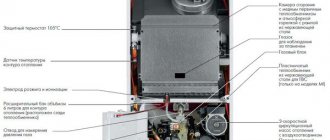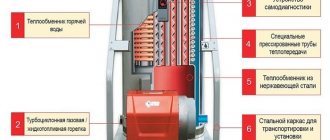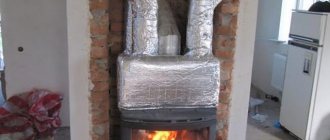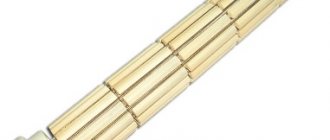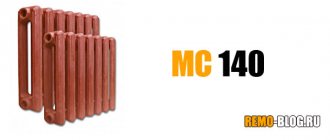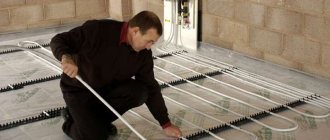How to choose a trench convector
You are undergoing renovation, and you have decided that you will install an in-floor convector, but many questions immediately arise: where, which one, with or without a fan. Trench heating convectors are a specific product, there are many nuances that would be a good idea to study before making a purchase. We will try to help you choose the right device. To do this, we have compiled a list of questions that the designer needs to answer for correct calculations.
What you need to know to choose the right convector
Room area
Panoramic window length
Convector depth to the floor
Convector floor width
Is a fan needed or not?
Convector in the bedroom
Convector control
Wet or dry room
I don't want a fan! What to do?
Additional heating
- 1
Manufacturers
The number of recognized companies producing trench convectors includes Russian ones, in particular, the “Breeze” models.
Depending on the power, modifications are available with natural convection and with a tangential fan. The heat exchanger is made of copper-aluminum alloy, and the grille is made of duralumin. The coolant temperature can reach 130C, and the operating pressure can be 15 atm. Trench convector "Breeze"
Among the domestic products, the “EVA” collector is also known, designed for heating small rooms. The use of stainless steel parts, modern manufacturing technologies and the ability to independently select equipment make this heating option widely in demand. It all depends on financial capabilities and taste.
Water convectors “Kermi” (Belgium) are very popular in terms of wide selection and high reliability. They can be used as the main heat sources. The low height of the housing makes it possible to easily install in-floor convectors that are built into any floor. The range of product sizes and capacities is large, and the warranty is 10 years. They are equipped with thermostats and can work autonomously. The fans are powered from a 12 V source. Manufacturers produce in-floor water convectors to order.
High quality and reasonable prices have made the Czech brand “Minib” popular in Russia. Convectors reach maximum power in 10-15 minutes. If we compare them with radiators, then this requires 30 minutes.
It should also be noted the popularity of German convectors “Varmann”, where the latest innovations are used that do not significantly affect the final cost of the models. The product range has a wide range of possibilities. They are made in straight and semicircular shapes, in the form of corner structures or passing through columns.
Additional heating
Specialists can also talk about additional heating. What is meant? -warm floors, warm walls, someone leaves some of the heating devices and wants to install a convector only to prevent fogging of the continuous glazing. Maybe the windows overlook a loggia or balcony, this also needs to be indicated.
If you decide to combine, for example, leave one battery or install a water or electric heated floor, then you need a less powerful convector, which will allow you to save on its cost and the complexity of laying communications.
Principle and design of water convectors
Classic radiators heat walls and surrounding objects, thereby warming living spaces. In order to increase efficiency, they are made with fins, which creates a convective air flow. As a result, the heating rate of private houses and apartments increases. Heat is delivered to radiators using a heated coolant - most often this is ordinary tap water. It enters the room through convection fins and in the form of thermal radiation.
The principle of convection is very simple - heated air rises, and cold air comes in its place.
Convection is good because it provides quick heating of any type of room. Heated air masses, rising to the ceiling, displace cold air from below, forcing it to pass through convectors. Thanks to this, the results of the heating system become noticeable literally half an hour after turning on the heating. At the same time, a classic heating battery cannot boast of similar results.
The operating principle of water heating convectors is very simple. The coolant flowing through them heats the steel fin plates. As it heats up, it tends to rise, and the next portion of air takes its place. Pure laws of physics work here, providing high-quality heating of residential premises. The heating procedure is carried out absolutely silently, without disturbing household members.
Some water convection heaters have built-in fans that allow forced convection to warm up rooms faster.
How do water heating convectors work? Inside them we will find:
- steel or copper pipe - coolant flows through it;
- fins – it is responsible for heating the air masses;
- connection nodes - with their help, the devices themselves are connected to the water heating system.
As you can see, there is nothing complicated in the design of this device: a heat exchanger with connection points, closed by a housing.
Additionally, thermostats and air vents are installed - the former allow you to adjust the degree of heating, and the latter serve to remove air from the heating system. The design of convectors is very simple, and their miniature size will not spoil the interior of residential or work premises.
The scope of application of water convector heaters is extremely wide. They are used for heating private households, apartments in apartment buildings, office, administrative and industrial premises. Here is a list of their advantages:
- such heating devices provide quick warm-up - in terms of warm-up speed they are superior to conventional batteries;
- high efficiency - the heaters themselves release more than 95% of the incoming heat to the air masses;
- compactness - thanks to their small size, these heating devices can be used in rooms with panoramic glazing without spoiling the appearance.
This is a universal heating equipment for any premises.
Caring for heating convectors is very simple - they need to be periodically cleaned of dust that accumulates on the fin elements. This is where a vacuum cleaner with good suction comes in handy. External care involves simply removing dust with a damp cloth. Internal cleaning is carried out at least a couple of times a month, which prevents the accumulation of large amounts of dirt.
Lack of proper care of heating appliances will lead to the accumulation of a large amount of dust - natural convection will spread it throughout the room, which will not improve the health of allergy sufferers.
Types of in-floor heaters
There are many models of in-floor heaters produced today, and they all differ in some way from each other. If we do not consider parameters of secondary importance, then all heating convectors built into the thickness of the floor can be divided into two groups:
- water;
- electric.
The units within each of these two groups differ in size, configuration, power, design of the external grille, type of convection - natural or forced (with fan) and performance class.
Water heaters for internal floor placement
An underfloor water convector is a heating device connected to a central or autonomous heating system.
The operating diagram of a water in-floor convector is the flow of cold air from the glazing of the window opening to the heating device, its heating and exit into the room.
A valve is installed at the point of insertion into the system, which can be used to regulate the amount of coolant circulating through the floor water heater.
The main element of the unit is a radiator with inlet and outlet fittings, through which flexible hoses or fittings are used to connect to the heating system, and hot water circulates through the heat exchanger.
Connecting the radiator of a floor-mounted heater using flexible hoses.
The radiator is made of a copper pipe, on which aluminum fins are made to increase the heat transfer area. Modern water heating convectors are equipped with automatic release valves for air entering the system along with water, which eliminates the formation of air locks and ensures efficient operation of the unit due to the stable intensity of coolant circulation.
Installation of a water convector in a niche and its rigid connection to heat-insulated pipes in grooved channels.
The intensity of the coolant supply to the convector can be manually changed by a valve at the point of connection to the heating system, but it is more effective to install a mechanical thermostat at the inlet of the heater that regulates the flow of hot water into the heat exchanger depending on the temperature of the water in the radiator.
On the left is a schematic cross-section of a manual valve and a mechanical thermostat, on the right is a natural image of the thermostatic head.
Floor-mounted heaters with a natural type of convection are designed for heating medium-sized rooms (16-25 sq. m.).
To ensure the natural movement of convective flows, the depth of the housing box must be at least 20 cm, and yet even multi-pipe devices of the natural type of convection do not always cope with the role of the main and only means of heating, forcing homeowners to additionally use other heating devices.
Multi-pipe radiator for a floor-mounted water convector with increased heat transfer.
The main advantage of this group of in-floor heaters is safety due to the absence of factors associated with the use of electrical appliances. In-floor water heating convectors do not require grounding, are not afraid of direct contact with moisture (this often happens on the floor), the surface temperature of these units is safe for humans upon short-term touch, and the outer grille can be made of valuable wood.
Methods of arrangement of floor-mounted heaters: on the left - corner placement, on the right - installation in steps.
The cost of such devices, depending on the power, class of technical equipment and design, ranges from 20 to 100 thousand rubles.
Important! When connected to a central heating system, water heating convectors built into the floor are heaters that do not require energy costs (with the exception of models with a fan).
Forced convection type water heating devices
Equipping the device with a fan accelerates convective flows, but at the same time reduces their temperature - the air heats up less due to the shorter duration of contact with the heat exchanger. Therefore, the radiators of in-floor heaters with forced convection are made of a more complex design (two-three-four-pipe), up to 3 meters long, which prolongs the contact of air with the heat exchanger and increases its temperature at the outlet of the unit.
What are water heating systems made of?
The main element of a water heating system is the boiler. It can work with any type of fuel, be it wood or coal, electricity, water or gas. The most common devices among consumers are solid fuel and gas boilers.
The water heating system includes a heating boiler, piping and, of course, batteries. It is through these elements that liquid or antifreeze moves.
- Steel – can be stainless or galvanized, which makes them resistant to corrosion;
- Copper - perfectly withstands high pressure and temperature, and is distinguished by its reliability;
- Metal-plastic - do not corrode, are easy to install, but do not tolerate temperature changes, which is why they can leak.
Among other things, the heating system includes expansion tanks and elements that regulate the heating process itself. As a rule, these are various thermostats, safety valves, a circulation pump, a pressure gauge, shut-off and automatic diverters.
Advantages and disadvantages of equipment
The modern market offers a huge number of heating devices for floor and wall installation. Universal in-floor devices are especially popular, as they have unique characteristics and advantages.
Disadvantages of built-in devices
The main disadvantage of in-floor structures is their high cost. Their price is several times higher than similar floor-mounted heating devices of the same power.
This is due to the fact that installation of the device is much more complicated than convectors of conventional models.
The underfloor heating installation diagram describes the process of installing a water structure. It is quite complex, as it includes several important processes (+)
When installing built-in equipment, the supply pipes must be in the floor. This is a popular solution, difficult from a technical point of view. For hidden installation of the product, it is necessary to raise the floor, which cannot be done in all rooms.
Advantages of in-floor systems
The main advantage of convectors built into the floor is hidden installation, which provides ample opportunities for bold design solutions. This is a suitable option for equipping shop windows and panoramic glazing.
Despite the installation difficulties and high price, floor heating convectors are a popular and stylish model of heating device
For open, stylish interiors, installing heating units can be a challenge due to lack of space. In most apartments and residential buildings equipped with fashionable panoramic windows, a bulky radiator will not fit into the overall style of the room.
The optimal solution in such situations is a built-in convector. Moreover, you can choose a model with natural or forced convection.
Differences between radiator and electric types
In electric and water in-floor heating devices, fans are installed to increase power. This allows you to get much more heat from convectors.
The fans operate on 12, 24 V DC and 220 V AC. To reduce the noise level, they are placed on vibration-proof supports.
Despite the noise that usually comes from forced convection convectors, they have important advantages. The devices produce more heat and precipitate cold currents that come from the glass surface
If the owner of the premises plans to use a water in-floor convector as the only or main source of heat, it is recommended to choose models with forced convection. They quickly and efficiently heat the air in the room, preventing condensation from settling on the glass.
Some models, for example, products from Kermi, can be used not only for heating rooms, but also for cooling them. This happens thanks to the use of 2 separate heat exchange elements connected to different systems - heating and cooling.
There are 2 types of built-in systems - two-pipe and four-pipe. In two-pipe systems, 1 heat exchanger works with 2 systems.
On the modern market there are modifications of in-floor convectors that supply clean and warm air to the room. First, it enters a special hole, then it is cleaned using built-in filters. Then the air is heated, after which it enters the room.
Water in-floor convectors with built-in filters are optimally suited for installation in rooms with double-glazed windows. They usually have low humidity and lack of oxygen.
Manufacturers also produce in-floor devices for effective heating of residential, commercial and industrial premises with high humidity levels. In their production, moisture-resistant and modern electrical equipment is used. These models are equipped with a drain to remove accumulated condensate.
Before starting repairs, you can order a convector of a non-standard size, corresponding to the characteristics of the room.
Some manufacturers make rotating heating elements that make cleaning the inside of the case easier. The heat exchanger can be installed on flexible hoses, making it easy to remove for cleaning.
Electronic or electromechanical thermostats are responsible for controlling the temperature and power of the convector. They are located in the device body and are controlled using a remote or remote control. Electronic thermostats allow you to program the temperature by time of day and day of the week.
Advantages of water heating convectors
- Modern water convectors are more efficient and economical than conventional heating batteries. The following advantages can be highlighted:
- The principle of convection is used. The air is heated, not the body of the device (as in conventional radiators). As a rule, the body heats up to a temperature of no more than 40-45°C, which allows them to be used in kindergartens without a protective wooden casing, as is the case with cast iron radiators. A child will not be able to get burned by touching the body of the device.
- High heat transfer with low energy consumption.
- Resistance of materials to corrosion. Copper, aluminum and stainless steel are used to manufacture high-quality water heating convectors. This allows them to be placed in rooms with high humidity.
- Compact heating system and light weight.
- High speed of heating the room.
- Does not dry out the air.
- The presence of a thermostat allows you to regulate the temperature.
- Unique design and high quality heating devices and components.
Kampmann Katherm NK.

